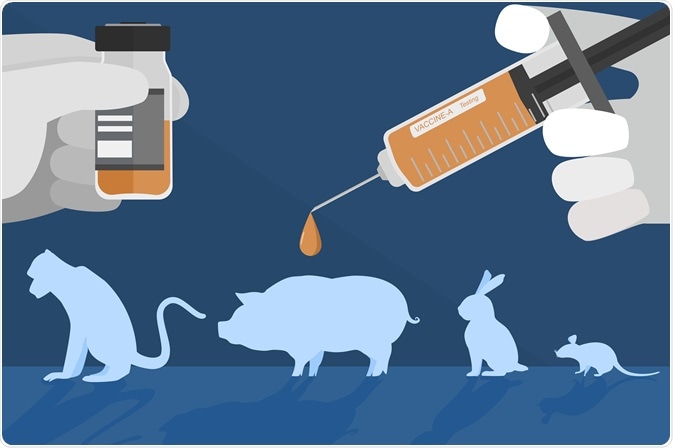Has for decades required testing on a variety of animals including rats dogs birds and fish to gauge their toxicity before the chemicals can be bought sold or used in the. Also animals are used to produce a variety of vaccines Pringle 1989 44.
Many other methods such as EpiSkin have replaced the need.

Medical testing on animals. Using animals for cosmetics and medical tests has contributed towards a debate based on conflicting interests. Animals in US medical school used to be common practice. A Brief History January 27 2015 Animals are used in biomedical research for everything from basic understanding and exploratory research to drug and vaccine development.
2 Animals are used to develop medical treatments determine the toxicity of medications check the safety of products destined for human use and other biomedical commercial and health care uses. Despite the efforts in justifying the value of animals in conducting analyses this study seeks to elaborate whether or not it is rational to use animals as test subjects in medical. But in recent decades weve.
Vaccines tested on animals have saved millions of animals that would otherwise have died from rabies distemper feline leukemia infectious hepatitis virus tetanus anthrax and canine parvo virus. As youll see there are few laws protecting laboratory animals and little regulatory oversight to ensure compliance with these laws. An estimated 26 million animals are used every year in the United States for scientific and commercial testing.
Animals have been used as test subjects for medical experiments and other scientific investigations for hundreds of years. Scientists often study the effects of drugs and chemicals on animals before they deem them safe for humans. The Animal Welfare Act or AWA is a federal law that addresses the standard of care animals receive at research facilities.
The Animal Welfare Act. In medical research animal testing is used to find new cures for diseases causes for diseases and for the development of new surgical procedures. As of next year though the Australian Government is banning cosmetic testing on animals as well as the selling of any animal tested cosmetics.
Animals such as chimpanzees mice and guinea pigs have been used in medical research for centuries and they have taught us much about anatomy and physiology. Two of the most commonly used toxicity tests are the Draize test and the LD50 test both of which are infamous for the intense pain and suffering they inflect upon experimental animals. We recognize how animals benefit us therefore precautions are made to ensure the correct care of the animals being.
National and international regulations currently require that new medicines are tested on animals before being licensed for use. When possible they try to perform these toxicology tests using biochemical or cell-based in vitro systems instead of with animals such as mice. As of mid this year all animal use has been banned now replaced with other methods.
Until such a discovery animals must continue to play a critical role in helping researchers test potential new drugs and medical treatments for effectiveness and safety and in identifying any undesired or dangerous side effects such as infertility birth defects liver damage toxicity or cancer-causing potential. With the rise of the modern animal rights movement in. Basic biological research constitutes the most common use of animals in experiments around the world.
Medical Testing on Animals. These experiments are designed to answer interesting scientific questions that animal researchers speculate might be useful medically in the future. Around 5 million animals including mice rats fish chickens rabbits dogs and primates are used across the EU for this purpose each year.
When animals are used for product toxicity testing or laboratory research they are subjected to painful and frequently deadly experiments. This law excludes roughly 95 percent of the animals tested upon such as rats mice birds fish and. Animals themselves benefit from the results of animal testing.


